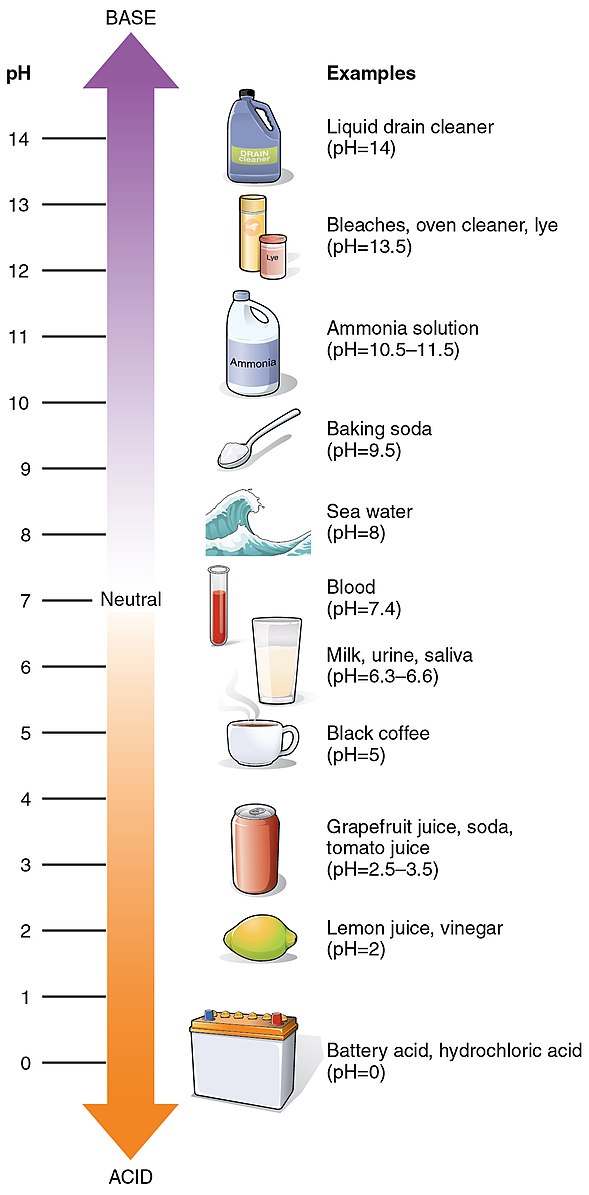The pH of citric acid in water can range from 2-3, making it a relatively strong acid. The pH of a citric acid solution is determined by the concentration of hydrogen ions (H+) present, which is affected by the dissociation of citric acid molecules in water. When citric acid is added to water, it dissociates into its conjugate base (citrate ion) and hydrogen ions. The concentration of hydrogen ions in the solution determines its pH, with lower pH values indicating a higher concentration of hydrogen ions.
Understanding Citric Acid and its pH
Citric acid is a weak, triprotic acid that is commonly found in citrus fruits, such as lemons, limes, and oranges. It is widely used in the food and beverage industries as a natural preservative, flavoring agent, and chelating agent. Citric acid is also used in cleaning products, personal care products, and pharmaceuticals.
The pH of a citric acid solution is determined by the concentration of hydrogen ions (H+) present in the solution. When citric acid is added to water, it dissociates into its conjugate base (citrate ion) and hydrogen ions, as shown in the following equation:
C₆H₈O₇ ⇌ C₆H₇O₇⁻ + H⁺
The equilibrium constant (Ka) for this reaction determines the extent of dissociation and the concentration of hydrogen ions in the solution. The pH of the solution is then calculated using the formula:
pH = -log[H⁺]
The pH of a citric acid solution can range from 2 to 3, depending on the concentration of the acid. This makes citric acid a relatively strong acid compared to other organic acids, such as acetic acid (vinegar) or lactic acid.
Factors Affecting the pH of Citric Acid Solutions
 Image source: OpenStax College
Image source: OpenStax College
The pH of a citric acid solution can be influenced by several factors, including:
-
Concentration of Citric Acid: The higher the concentration of citric acid in the solution, the lower the pH will be, as there will be a higher concentration of hydrogen ions.
-
Temperature: The pH of a citric acid solution can be affected by temperature. As the temperature increases, the dissociation of citric acid may increase, leading to a higher concentration of hydrogen ions and a lower pH.
-
Presence of Other Ions: The presence of other ions in the solution, such as metal ions or other acids or bases, can affect the pH of the citric acid solution. These ions can interact with the citric acid and its conjugate base, altering the equilibrium and the resulting pH.
-
Dilution: Diluting a citric acid solution with water can increase the pH, as the concentration of hydrogen ions is reduced.
Adjusting the pH of Citric Acid Solutions
In some applications, it may be necessary to adjust the pH of a citric acid solution to achieve the desired properties or effects. This can be done by adding a base, such as sodium hydroxide (NaOH) or sodium bicarbonate (NaHCO₃), to neutralize the acid and raise the pH.
The amount of base needed to adjust the pH can be calculated using the pH and molarity of the acid and base, as well as the stoichiometry of the reaction between them. For example, the reaction between citric acid and sodium hydroxide can be represented as:
C₆H₈O₇ + 3NaOH → Na₃C₆H₅O₇ + 3H₂O
By carefully controlling the amount of base added, the pH of the citric acid solution can be adjusted to the desired range.
Safety Considerations
When working with citric acid solutions, it is important to handle them with care to avoid exposure to concentrated acid, which can cause irritation or damage to the skin, eyes, and respiratory system. Proper personal protective equipment, such as gloves and goggles, should be used when handling citric acid solutions.
It is also important to store citric acid solutions properly to prevent contamination or degradation. Citric acid solutions should be kept in airtight containers and stored in a cool, dry place, away from direct sunlight.
Conclusion
The pH of citric acid in water is a crucial factor to consider in various applications, from food and beverage production to cleaning and personal care products. Understanding the factors that affect the pH of citric acid solutions and the methods for adjusting the pH can help ensure the effectiveness and safety of these solutions. By following best practices for handling and storing citric acid, users can safely and effectively utilize this versatile and widely-used acid.
References:
- Medical News Today. (n.d.). Citric acid: Structure, uses, intolerance, and more. Retrieved from https://www.medicalnewstoday.com/articles/265844
- NCBI. (2016). The pH of beverages available to the American consumer. Retrieved from https://www.ncbi.nlm.nih.gov/pmc/articles/PMC4808596/
- Socratic. (2017). How do you determine the pH of citric acid? Retrieved from https://socratic.org/questions/how-do-you-determine-the-ph-of-citric-acid
- Humblebee & Me. (2017). How much citric acid you should weight to get a specific pH. Retrieved from https://www.humblebeeandme.com/hive/topic/how-much-citric-acid-you-should-weight-to-get-a-specific-ph/
- Wikipedia. (2022). Citric acid. Retrieved from https://en.wikipedia.org/wiki/Citric_acid
- Physics Forums. (2019). Calculate pH of citric acid at various concentrations. Retrieved from https://www.physicsforums.com/threads/calculate-ph-of-citric-acid-at-various-concentrations.939689/
